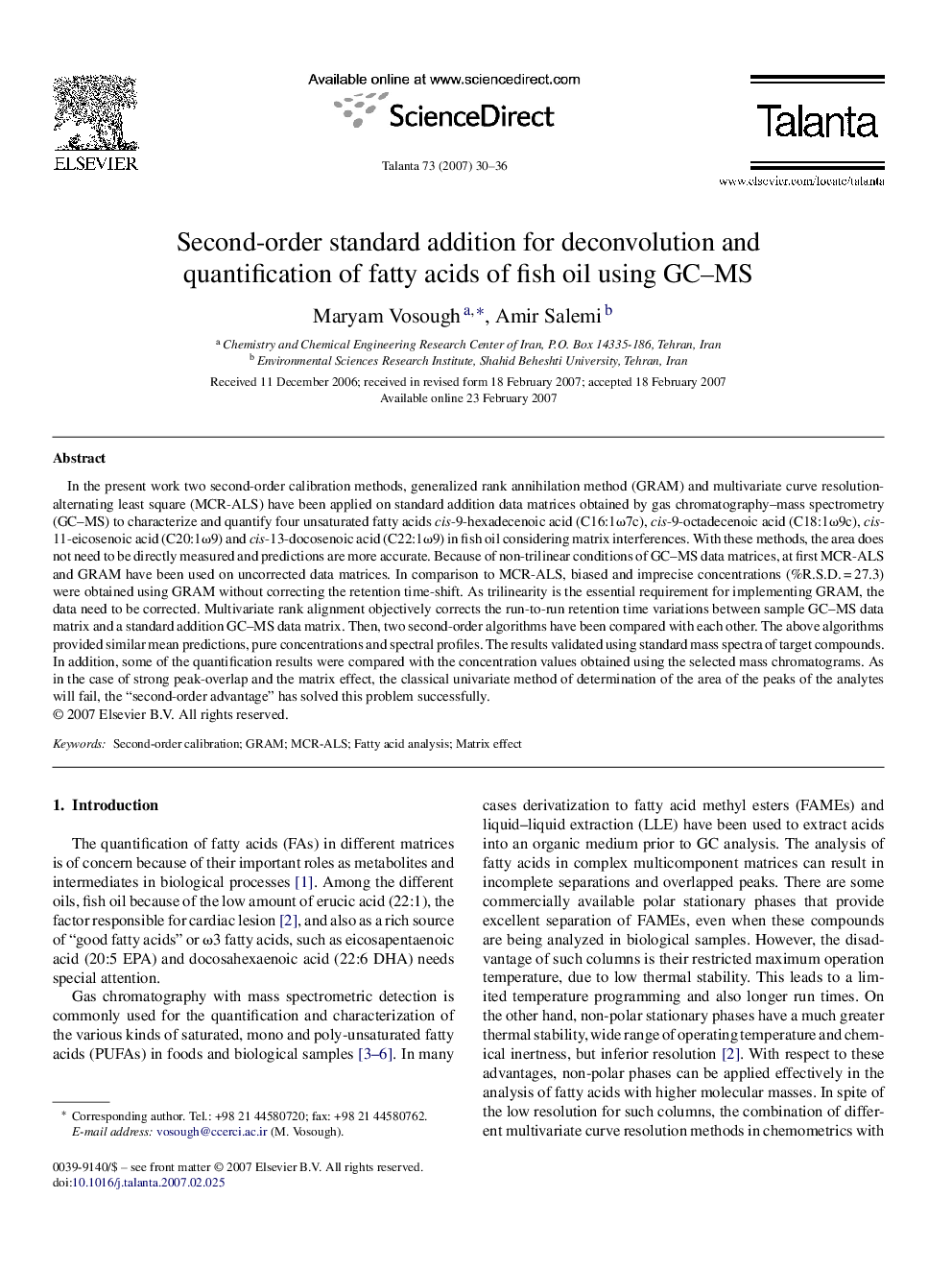| Article ID | Journal | Published Year | Pages | File Type |
|---|---|---|---|---|
| 1244850 | Talanta | 2007 | 7 Pages |
In the present work two second-order calibration methods, generalized rank annihilation method (GRAM) and multivariate curve resolution-alternating least square (MCR-ALS) have been applied on standard addition data matrices obtained by gas chromatography–mass spectrometry (GC–MS) to characterize and quantify four unsaturated fatty acids cis-9-hexadecenoic acid (C16:1ω7c), cis-9-octadecenoic acid (C18:1ω9c), cis-11-eicosenoic acid (C20:1ω9) and cis-13-docosenoic acid (C22:1ω9) in fish oil considering matrix interferences. With these methods, the area does not need to be directly measured and predictions are more accurate. Because of non-trilinear conditions of GC–MS data matrices, at first MCR-ALS and GRAM have been used on uncorrected data matrices. In comparison to MCR-ALS, biased and imprecise concentrations (%R.S.D. = 27.3) were obtained using GRAM without correcting the retention time-shift. As trilinearity is the essential requirement for implementing GRAM, the data need to be corrected. Multivariate rank alignment objectively corrects the run-to-run retention time variations between sample GC–MS data matrix and a standard addition GC–MS data matrix. Then, two second-order algorithms have been compared with each other. The above algorithms provided similar mean predictions, pure concentrations and spectral profiles. The results validated using standard mass spectra of target compounds. In addition, some of the quantification results were compared with the concentration values obtained using the selected mass chromatograms. As in the case of strong peak-overlap and the matrix effect, the classical univariate method of determination of the area of the peaks of the analytes will fail, the “second-order advantage” has solved this problem successfully.
